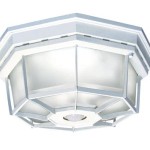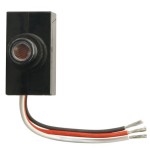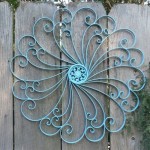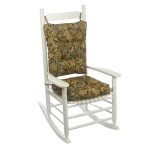How To Hang String Lights Outdoors Without Trees
String lights offer a versatile and attractive way to illuminate outdoor spaces, creating a warm and inviting ambiance. While trees provide a natural and convenient means of hanging these lights, many properties lack sufficient tree coverage or have tree arrangements that don't align with desired lighting designs. Fortunately, several alternative methods exist for hanging string lights outdoors when trees are not available. These methods involve utilizing existing structures, installing new support systems, and employing creative solutions to achieve the desired aesthetic and functionality.
Before embarking on the project, careful planning is crucial. Consider the desired coverage area, the layout of the space, and the availability of existing structures that can be incorporated into the design. Measure the distance between potential anchor points to determine the required length of string lights. Select weather-resistant string lights specifically designed for outdoor use. These lights are typically constructed with durable materials and feature waterproof connections to withstand exposure to the elements. Furthermore, ensure a reliable power source is accessible, either through an outdoor outlet or an extension cord rated for outdoor use.
Safety should be a primary concern throughout the installation process. Disconnect the power supply before handling any electrical components. Use appropriate safety gear, such as gloves and eye protection, when working with tools and hardware. When working at heights, utilize a sturdy ladder or step stool and exercise caution to prevent falls. Adhere to all local electrical codes and regulations to ensure a safe and compliant installation.
Utilizing Existing Structures
Existing structures around the property often provide suitable anchor points for hanging string lights. Houses, fences, pergolas, and sheds can all be incorporated into the design. The key is to identify sturdy and stable points that can support the weight of the lights and withstand wind and weather conditions.
When using a house as an anchor point, consider attaching the lights to the eaves, gutters, or siding. Avoid attaching lights directly to the roof, as this can potentially damage the roofing material. Eaves and gutters often provide convenient attachment points, but ensure they are securely fastened and capable of bearing the additional weight. Siding can also be used, but take care not to damage the material when installing attachment hardware.
Fences offer another readily available option for hanging string lights. The lights can be attached to the fence posts, rails, or even the fence fabric itself. For wooden fences, use screws or nails to secure the lights. For metal fences, consider using zip ties or S-hooks. Ensure the fence is structurally sound and capable of supporting the weight of the lights, especially in windy conditions.
Pergolas are ideal for creating a canopy of string lights. The lights can be draped across the beams and supports, creating a romantic and inviting atmosphere. Use zip ties, S-hooks, or wire to secure the lights to the pergola structure. Consider running the lights along the perimeter of the pergola to define the space and create a more enclosed feel.
Sheds can also be used as anchor points for string lights. The lights can be attached to the eaves, siding, or even the roof of the shed. Ensure the shed is structurally sound and capable of supporting the added weight. Consider using the shed as a focal point in the lighting design, drawing attention to this often-overlooked structure.
Installing Support Posts
When existing structures are not available or do not provide suitable anchor points, installing support posts becomes necessary. Support posts offer a customizable and versatile solution for hanging string lights, allowing for greater flexibility in design and placement. These posts can be constructed from various materials, including wood, metal, and composite materials. The specific type of post and installation method will depend on the desired height, span, and aesthetic.
Wooden posts are a popular choice due to their affordability and ease of installation. Pressure-treated lumber is recommended to resist rot and decay. The posts should be buried deep enough to provide adequate stability, typically at least one-third of their total length. Concrete can be used to secure the posts in the ground and prevent them from shifting or leaning.
Metal posts offer a more durable and weather-resistant alternative to wood. Steel or aluminum posts are often used for string light installations. Metal posts can be directly buried in the ground or mounted on concrete pads. Powder coating can be applied to the posts to enhance their appearance and protect them from corrosion.
Composite posts are made from a blend of wood fibers and plastic, offering a low-maintenance and long-lasting option. Composite posts are resistant to rot, decay, and insect damage. They can be installed using similar methods as wooden posts, but may require specialized fasteners. The aesthetic appeal can be tailored through different color options.
The height and spacing of the support posts will depend on the desired aesthetic and the length of the string lights. Taller posts will create a more dramatic effect, while shorter posts will provide a more intimate and cozy feel. The spacing between the posts should be consistent to ensure a uniform appearance. Consider running a guide wire between the posts to provide additional support and prevent the lights from sagging.
Creative Alternatives and Considerations
Beyond utilizing existing structures and installing support posts, several creative alternatives and considerations can enhance the string light installation and address specific challenges. These include using planter boxes, tension wires, and adjustable hardware.
Planter boxes can serve as sturdy and attractive bases for support posts. The posts can be inserted into the planter boxes and secured with concrete or gravel. This method is particularly useful for patios or decks where digging into the ground is not possible. Choose planter boxes that are large and heavy enough to provide adequate stability, especially in windy conditions.
Tension wires can be used to provide additional support for the string lights, especially when spanning long distances between anchor points. The tension wires are typically made of steel or stainless steel and are secured to the anchor points with turnbuckles. The turnbuckles allow for adjusting the tension of the wire, preventing sagging and ensuring a taut and uniform appearance.
Adjustable hardware, such as carabiners and S-hooks, can be used to fine-tune the placement and tension of the string lights. Carabiners allow for quickly attaching and detaching the lights, making it easy to adjust the length or configuration. S-hooks provide a simple and versatile way to suspend the lights from various anchor points.
Consider the overall aesthetic of the outdoor space when designing the string light installation. The style, color, and placement of the lights should complement the existing décor and create the desired ambiance. Experiment with different lighting patterns and configurations to find the optimal arrangement. For instance, draping the lights in a zig-zag pattern or creating a canopy effect can add visual interest.
Proper maintenance is essential to ensure the longevity and safety of the string light installation. Regularly inspect the lights and hardware for any signs of damage or wear. Replace any damaged bulbs or cords promptly. Clean the lights periodically to remove dirt and debris. During periods of inclement weather, consider temporarily removing the lights or securing them more tightly to prevent damage.
Finally, be mindful of neighbors when installing string lights. Avoid creating excessive light pollution that could disrupt their privacy or sleep. Consider using dimmer switches or timers to control the intensity and duration of the lights. Communicate with neighbors about the installation to address any concerns they may have.

How To Hang String Lights In Backyard Without Trees Wm Design House

How To Hang String Lights Outdoors

6 Ways How To Hang String Lights In Backyard Without Trees

How To Hang String Lights In Backyard Without Trees

How To Hang String Lights In Backyard Without Trees

How To Hang Backyard String Lights Without Trees Or Proper Diy Light Poles Hello Bombshell

How To Hang String Lights In Backyard Without Trees

Pin On 1000 Life S

How To Hang String Lights Outdoors

The Easiest Diy Outdoor String Light Poles Tutorial Jessica Welling Interiors








